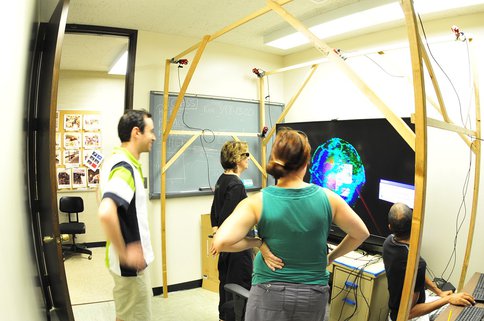2011 Annual Science Report
 University of Hawaii, Manoa
Reporting | SEP 2010 – AUG 2011
University of Hawaii, Manoa
Reporting | SEP 2010 – AUG 2011
EPO Activity: 2011 CASS - Computational Astrobiology Summer Symposium
Project Progress
The goal of the Computational Astrobiology Summer Symposium (CASS) is to introduce computer science and electrical engineering students to astrobiology research, and to encourage astrobiology researchers to adopt current computational tools and approaches. This year’s CASS took place August 1-14 at the University of Hawaii at Manoa, with a 3-day field trip to astrobiologically relevant sites on the Big Island, led by Chris McKay of NASA Ames. Unlike previous years, 2011 focused on the construction and utilization of a mini-CAVE, a 3-D visualization system. The 8 participants built a complete 2-screen mini-CAVE system, including head- and wand-tracking, and installed and tested two distinct libraries of 3-D visualization software. Also, in collaboration with CASS home and guest speakers, they developed a list of projects that use 3-D visualization to enable new astrobiology research or outreach.
Figure 1: The 2011 CASS challenge to contruct a low cost cave nears completion.. Using this equipment, the UHNAI team will now use the CAVE to explore a variety of data analysis challenges that are currently impeded by traditional, two-dimensional displays. Specific projects range from visualizing comets to a real-time virtual collaboration with the Georgia Institute of Technology to build protein molecules relevant to the origin of life. The UHNAI team is currently soliciting ideas for public outreach events that can engage a broader audience in computer-aided research
